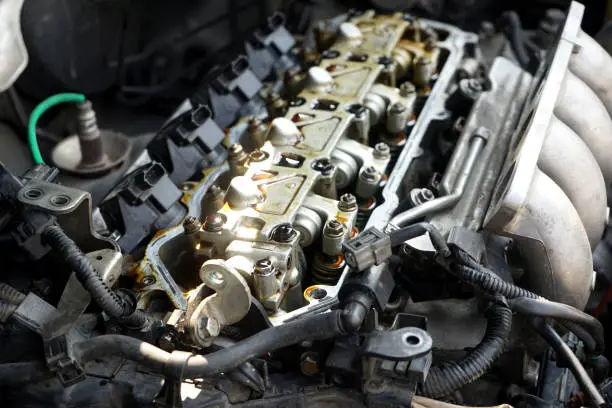Exhaust System And Mot: Understanding The Significance And Process

Have you been driving your vehicle for more than 3 years? Then, it is necessary to understand the MOT test and its process. This is an yearly test for every vehicle above 3 years. In the UK, your car has to be tested every year for the MOT certificate. Without this, you could be legally fined or punished. The test becomes even more crucial because of its significance in maintaining the standards. The MOT test Northampton confirms that your car meets all the environmental and safety standards.
The MOT test includes around 20 checks. Inspection of almost every minor and major component ensures your vehicle’s roadworthiness. Among these, the exhaust system plays a major role in determining your vehicle’s emission standards. Recent surveys from the DVLA have revealed that 3.2% of MOT fails have been due to exhaust issues. This includes failure due to emission levels, leaks, and higher noise. Servicing your exhaust system could reduce your chances of failing the MOT. To learn more about the exhaust system and its effects on the MOT, follow this guide.
What is the exhaust system? How does it function?
An exhaust system is a significant component of all vehicles. It includes various components serving their specific functions. A properly functioning exhaust system is just as important as the engine itself. The system contributes to a smoother driving experience. It consists of five main components: the catalytic converter, a manifold, a resonator, an oxygen sensor, and the silencer.
A critical function of your vehicle’s exhaust is protecting the cabin from harmful emissions from the engine. The system prevents harmful gases, such as hydrogen monoxide and carbon monoxide, from reaching the passenger cabin of the vehicle. These gases are then redirected from the front part of the vehicle to the rear portion. Even when these harmful gases are not reaching your cabin, they can pose a lot of health risks. If they are directed outside to the environment it can lead to air pollution. To prevent such situations, the exhaust system converts these harmful gases to inert gases that don't react with the atmosphere when released. Each of the parts of an exhaust system plays a major role. The harmful gases pass through all components that help in environmental protection.
The exhaust system is also important for reducing the level of noise and vibration produced by a vehicle. The silencer plays a major role in this function. Hence, if any one part of your exhaust system becomes faulty, it might affect your vehicle’s overall performance. Plus, loud noises and harmful emissions also lead to MOT failure. If there are signs of a faulty exhaust system, exhaust repair is the best solution.
What can cause high emission from vehicles?
Your car could be emitting higher toxic gases due to several reasons. Understanding these reasons is essential for proper maintenance and repairs. They could also be cause of an unsuccessful MOT:
- Air filters that are blocked could cause greater emission rates.
- If the Engine Management light on your car’s dashboard is turned on, it indicates a faulty exhaust system. This also leads to higher emissions.
- A cause of higher emission is also excessive fuel consumption. Issues such as engine damage, worn cylinder rings, damaged pistons, or leaking cylinders could result in increased fuel consumption.
- A malfunction in the catalytic converter also increases the amount of harmful emissions.
- Sensor issues and worn fuel injectors also cause higher vehicle emissions. So does irregular oil changes or a cracked petrol cap.
Such minor issues often go unnoticed until they turn into high-risk damages. Regular services are a necessity to prevent this. They ensure optimal vehicle safety and performance, with greater chances of passing the MOT test.
What to expect during the MOT emissions testing?
Being aware of the whole MOT procedure helps you prepare your vehicle accordingly. Similarly, the emissions testing during the MOT is also a significant process. Find out the common procedure of an emission testing in the UK:
1.Preliminary testing:
During this step, the tester will check the following aspects:
- The engine oil is sufficient.
- There is a correct level of coolant.
- Sufficient fuel for carrying out the test.
2. Visual Examination:
After the preliminary testing is completed, the tester conducts the following checks:
- The tester raises the engine speed up to 2500 rpm. After approximately 20 seconds, they will turn the speed back to a natural level. On stabilisation of the speed, the tester will check the smoke released from the tailpipe.
- If your vehicle emits a black or dense blue smoke at this stage, it will fail the test.
3. Standard Emission test for petrol vehicles:
In petrol vehicles, the tester analyzes the concentration of carbon monoxide (CO) and hydrocarbons (HC).
- First test: At an engine speed of 2500 rpm to 3000 rpm, the CO concentration must be less than 0.2%.
- Second test: At an engine speed of 450 rpm to 1500 rpm, the CO concentration should be less than 0.3%.
4. Metered Smoke test for diesel vehicles:
During this test, the following checks are conducted:
- To ensure the engine's proper functioning, the tester will raise the engine speed to 2500 rpm. To confirm fuel pump operation, the engine speed is increased to 3500 to 4500 rpm. This is the maximum speed.
- At the maximum speed, if the engine is stable, the test continues. However, an unstable engine at maximum speed leads to test failure.
- After passing the speed check, the tester uses a smoke meter. This checks the emission levels from the tailpipe.
If your car has failed the emissions test, it is important that you proceed carefully. Invest in exhaust repair Northampton to ensure a smooth-functioning vehicle and successful MOT testing.